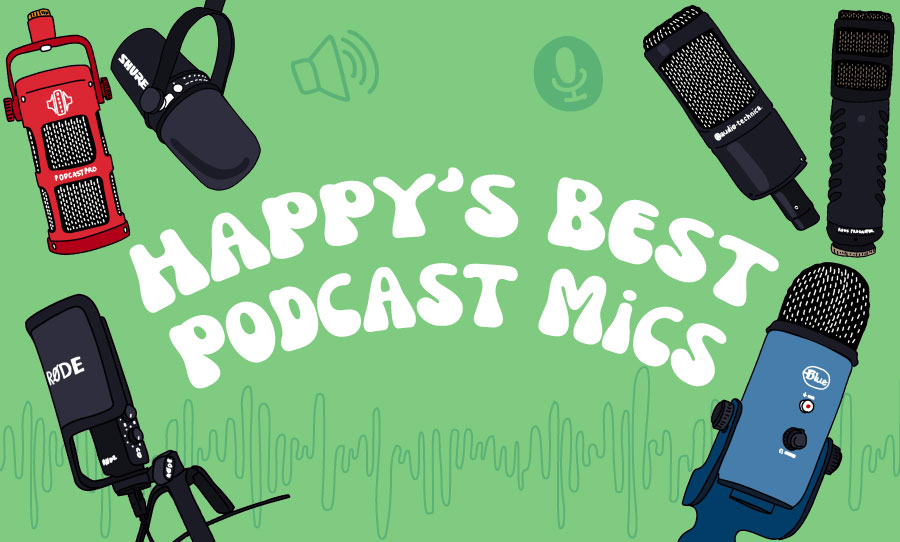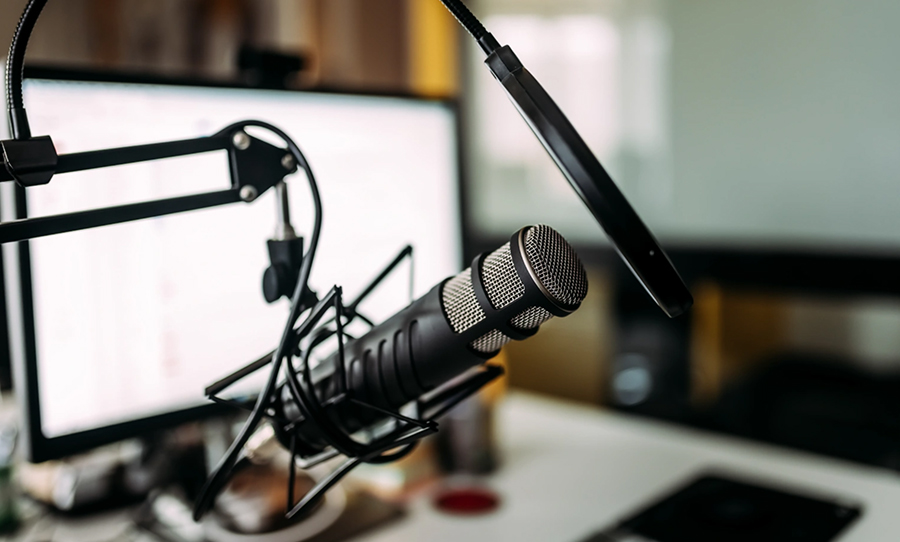The RØDECaster Pro, Pod Mic and Wireless GO are the latest in podcast technology. There’s no denying the splash that podcasting has made in the media landscape in recent years. Yes, people have been telling their stories on the radio for a century now, but podcasting has eschewed traditional media distribution, opening up the landscape for every possible genre you can think of. Everyone seems to have a favourite.
Traditional media like radio relies on very specific technical knowledge. In contrast, the vast majority of podcasts are independent, low budget operations. Therefore, robust, cost-effective and easy to learn podcasting equipment – like the RØDECaster Pro, PodMic and Wireless GO – is democratising the field and fuelling the podcasting fire.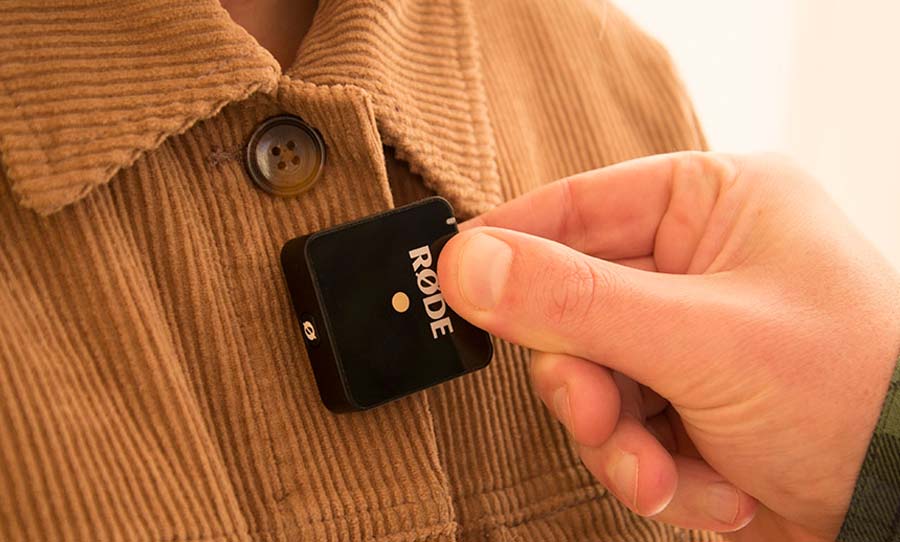
It can roll with the punches without breaking the bank. The RØDECaster Pro, PodMic and Wireless GO puts pro-level podcasting within reach.
One-Stop-Shop
Many podcasts centre around the equipment that you’d find in a typical project studio. The microphone gets plugged into an audio interface, which is, in turn, plugged into a computer running a DAW and is monitored through headphones. While there’s nothing essentially wrong with this setup, the RØDECaster Pro does all that – and more – in one easy-to-use box.
Yes, you still need microphones, like you would in any recording situation. It does away with the audio interface and computer though: all controls and recordings are carried out within this standalone studio.
Another potentially intimidating component of modern recording is the need to deal with software. Even to those au fait with the audio world, dealing with new software is inconvenient at best. In contrast, RØDECaster Pro is a very hands-on experience.
Recording and Routing
Up to four microphones can be plugged in at a time. Then all you need to do is push up the faders and hit the big REC button (you can record straight to an internal microSD card). And to listen, all guests can have their own separate headphone feed, complete with independent volume control.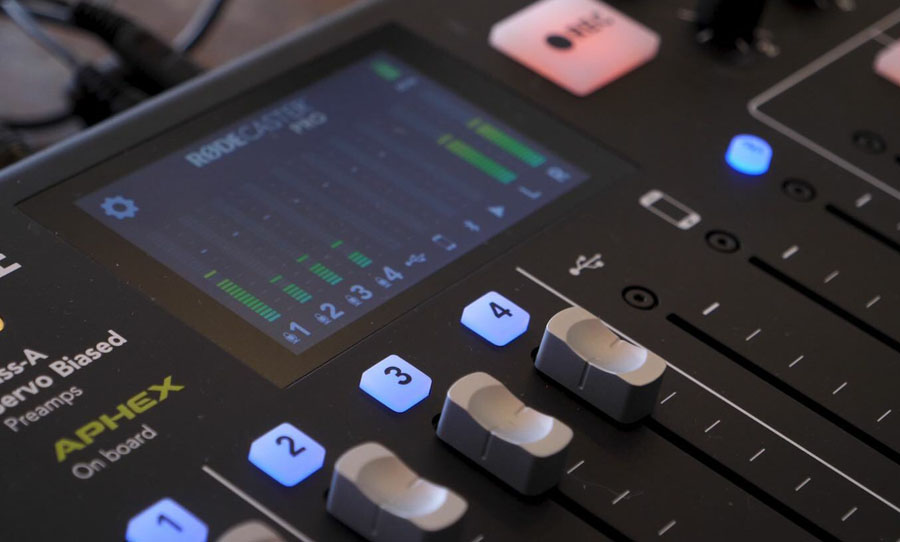 There’s another stereo feed for speakers as well. These can be routed to an external control, or if your podcast ends up on the big stage, it can be pumped through a PA system.
There’s another stereo feed for speakers as well. These can be routed to an external control, or if your podcast ends up on the big stage, it can be pumped through a PA system.
And just like a professional radio studio, remote interviews are also catered for, with a channel each for mobile phones and Bluetooth devices. If you have sound sources from a computer that you wish to integrate, there is a dedicated USB channel. This USB source is bidirectional, so if you want, you can also record to a DAW of your choice, as well as the microSD card.
Finally, there’s a fader that corresponds with the big, colourful pads to the right. The pads can be loaded up with pre-recorded soundbites, jingles or entire interviews that you can play on-demand.
Dynamic Dynamite
Obviously, you’ll be needing those microphones to plug into your new podcast studio. To meet these ends, RØDE has designed microphones that are designed to deliver on clarity, power and convenience. The PodMic is a broadcast quality dynamic microphone, created to offer a flat and pleasing frequency response for vocal applications, but is robust enough to deal with spontaneous interview environments.
It clearly takes its aesthetic cues from the classics of broadcast – the ElectroVoice RE20 and the Shure SM7B, for example – but without the bulk and heaviness. It has an internal pop filter, meaning that podcasters can get up-close and personal without fearing excessive pops and clicks.
On the Go
Another suitable miking option is the Wireless GO. This a whole system, including a lapel mic, transmitter and receiver. In this case, the cable that comes from the transmitter is plugged into a channel on the RØDECaster Pro instead of a conventional microphone.
The advantages are that it gives podcasters and interview guests freedom of movement. You could be on stage where more crowd interaction is required, or you might be doing a piece to camera, where having a microphone in shot is not an option. Simply hook up the tiny mic to the lapel of your shirt and away you go.
Some other transmitters are bulky “belt packs” – containing batteries and very heavy. The transmitters and receivers in the Wireless GO system are comparatively minuscule – about half the size of a mobile phone. They lack internal batteries, making them incredibly light, and charge via mini USB.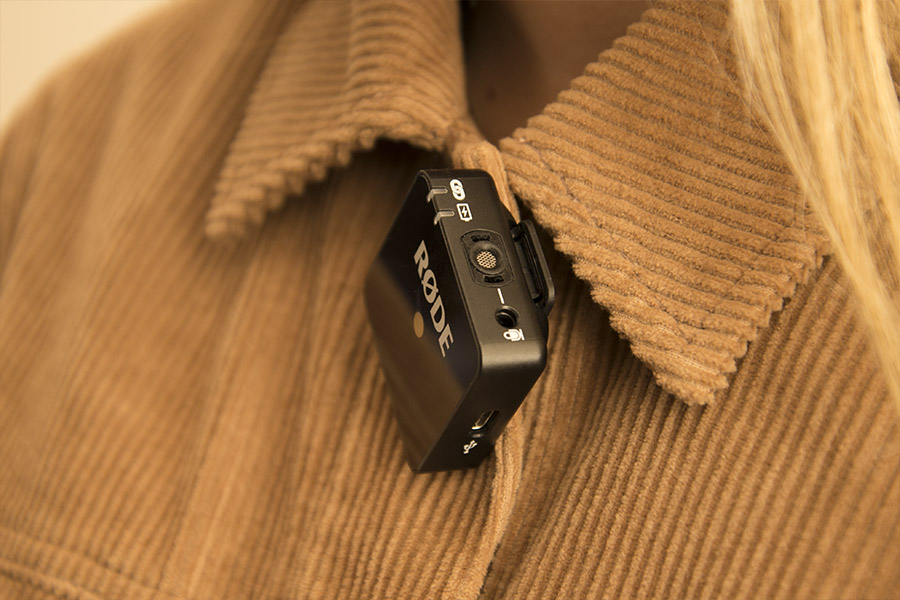 What’s more, you can actually even use the transmitter as mic without a clip-on lapel. The Wireless GO transmitter has a tiny condenser mic built-in, so if you don’t want the additional set up time, or you happen to forget to bring a separate lapel mic (hey, it happens!), you can still get on with your session.
What’s more, you can actually even use the transmitter as mic without a clip-on lapel. The Wireless GO transmitter has a tiny condenser mic built-in, so if you don’t want the additional set up time, or you happen to forget to bring a separate lapel mic (hey, it happens!), you can still get on with your session.
RØDE’s reputation for traditional studio microphones and field recording gear is known to most in the audio field. But with the RØDECaster Pro, PodMic and Wireless GO, they’ve maintained their budget-friendly pricing without sacrificing quality, striking a chord with a new audience, hungry for podcasting solutions.
For more details, visit the RØDE website.

